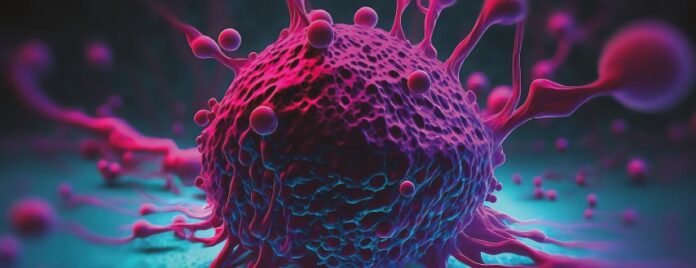
Reporting in The EMBO Journal, researchers at the Francis Crick Institute in London have uncovered a crucial mechanism that cancer cells use to survive in low oxygen environments, paving the way for novel therapeutic strategies to prevent treatment resistance.
The study focused on the immediate response of cancer cells when deprived of oxygen, a condition commonly found within solid tumors due to poor blood supply. While most cells can adapt to low oxygen levels by altering their energy production pathways, cancer cells show remarkable resilience in such environments, often leading to treatment resistance.
Important to this adaptation process is a protein called HIF1α, controlling the activation of genes involved in alternative energy production pathways when oxygen levels are low. However, until now, the mechanisms enabling cancer cells to sustain their energy demands in the critical hours following oxygen deprivation remained unknown.
In their experiments, the researchers discovered that within three hours of oxygen deprivation, cancer cells ramp up a process called glycolysis, which involves breaking down glucose to generate energy. Surprisingly, even when HIF1α production was genetically halted, glycolysis still increased, suggesting the existence of additional factors supporting this rapid adaptation.
Further investigation revealed the crucial role of two enzymes, LDHA and GOT1, in facilitating glycolysis under oxygen-limiting conditions. These enzymes, already present in cells under normal oxygen levels, act as reserves, ensuring a swift response to oxygen deprivation. Strikingly, the researchers found that inhibiting both LDHA and GOT1 was more effective at killing cancer cells in low oxygen environments compared to targeting either enzyme alone.
According to the scientists, these findings have significant implications for cancer therapy. As treatment-resistant cancer cells are often located in oxygen-deprived regions within tumors, targeting LDHA and GOT1 could offer a way to selectively eliminate these cell populations. Importantly, because normal cells rely less on these enzymes, the potential side effects on healthy tissues could be minimized.
Dimitrios Anastasiou, group leader of the Cancer Metabolism Laboratory at the Crick, emphasized the significance of this approach, stating, “Our research highlights a vulnerability for cancer cells in the first few hours of becoming cut off from oxygen.” Fiona Grimm, the study’s first author, likened the strategy to addressing a supply and demand imbalance, targeting cancer cells precisely when their need for LDHA and GOT1 is highest.
Looking ahead, the researchers are collaborating with pharmaceutical giant GSK to identify small molecules capable of inhibiting these critical enzymes. The ultimate goal is to develop targeted therapies that disrupt cancer cells’ adaptive mechanisms in low oxygen environments, potentially enhancing the efficacy of existing treatments.















